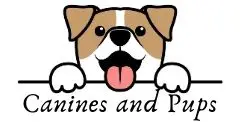If your dog has diarrhea and gas at the same time, it could indicate anything from a simple dietary issue to a more serious underlying health problem.
While some amount of gas and occasional diarrhea may be normal, consistent or excessive gas along with loose stools in dogs needs attention.
We outline the common causes of dog diarrhea and gas, what symptoms to look out for, and when it’s time to call the vet.
Table of Contents
Here’s Why Dog Diarrhea and Gas Happens
Dog diarrhea and gas often occur together due to gastrointestinal upset caused by diet changes, food intolerances, infections, or underlying health issues. When a dog experiences diarrhea, it usually means the digestive system is inflamed or irritated, which can also lead to the production of excess gas.
This gas may be a result of undigested food fermenting in the intestines, especially when the gut flora is disrupted.
Common causes include eating spoiled food, sudden dietary changes, allergies, parasites, or infections. While occasional gas and loose stools may not be serious, persistent or severe symptoms can indicate a deeper problem.

Common Causes of Dog Diarrhea and Gas
Several factors can cause both diarrhea and gas in dogs, and these symptoms are often interconnected:
1. Dietary Indiscretion
Dogs are naturally curious and often eat things they shouldn’t, such as spoiled food, trash, or foreign objects.
This dietary indiscretion can lead to an upset stomach, resulting in dog diarrhea and gas.
Spoiled or unfamiliar food can ferment in the gut, leading to foul-smelling gas and loose stools.
High-fat or greasy food scraps are especially problematic and may trigger digestive distress very quickly.
Tip: Always monitor what your dog eats and keep garbage and hazardous foods out of reach.
2. Sudden Change in Diet
Switching your dog’s food too quickly is a common cause of diarrhea and gas in dogs. Their digestive system needs time to adjust to new ingredients.
When new foods are introduced too rapidly, it disrupts the balance of gut bacteria, leading to fermentation, gas, and loose stools.
Gradually transition your dog’s diet over 7–10 days by mixing increasing amounts of the new food with the old food.
3. Food Intolerance or Allergies
Some dogs are sensitive to certain ingredients such as lactose, grains, soy, or specific proteins.
These food intolerances can cause both flatulence and diarrhea.
Unlike food allergies, which trigger immune responses like skin itching or ear infections, food intolerance affects the digestive system.
It often leads to smelly gas, bloating, loose stools, and sometimes vomiting.
Consider an elimination diet under the guidance of your veterinarian to identify the trigger.
Related: Dog diarrhea and straining (Here’s what it means)
4. Gastrointestinal Infections
Bacteria (like Salmonella or E. coli), viruses (such as parvovirus), or parasites (like Giardia or roundworms) can all cause dog diarrhea and gas.
These pathogens inflame the intestines, impair digestion, and promote fermentation, leading to excess gas production.
Stool testing may be necessary to identify the pathogen and provide the correct treatment.
Symptoms of GI infection often include:
Frequent diarrhea
Foul-smelling gas
Vomiting
Lethargy
Loss of appetite
5. Poor Quality or Indigestible Diet
Low-quality dog food containing fillers, artificial additives, or low-digestibility ingredients can cause chronic diarrhea and gas in dogs. Ingredients like corn, by-products, or excessive fiber can be hard for some dogs to digest, leading to fermentation and gas.
Choose dog food with high-quality protein sources and avoid artificial preservatives and excessive fillers.
6. Stress and Anxiety
Dogs may develop diarrhea and gas when under stress. Stress can alter gut motility and enzyme production, disrupting normal digestion.
Dogs experiencing separation anxiety, changes in routine, or exposure to new environments may develop temporary digestive upset.
Stress-related diarrhea is usually self-limiting, but if symptoms persist, consult your veterinarian.
7. Antibiotics and Medications
Certain medications, especially antibiotics, can disrupt the balance of gut bacteria (microbiome), leading to gas and diarrhea in dogs.
This is because antibiotics may kill beneficial bacteria along with harmful ones, resulting in gastrointestinal upset.
If your dog has recently been on antibiotics and now has diarrhea and flatulence, talk to your vet about probiotic supplementation to help restore balance.
Related: Dog diarrhea and sore throat (Here’s what it means)
8. Pancreatitis
Pancreatitis, or inflammation of the pancreas, can cause severe gastrointestinal symptoms, including diarrhea, vomiting, bloating, and gas.
It’s often caused by eating fatty foods or may be associated with other underlying illnesses.
Pancreatitis symptoms include:
Watery or greasy diarrhea
Gas and bloating
Loss of appetite
Abdominal pain
Lethargy
This is a serious condition that requires immediate veterinary care.
9. Inflammatory Bowel Disease (IBD)
IBD is a chronic condition where the lining of the dog’s intestines becomes inflamed.
It can cause persistent diarrhea, flatulence, weight loss, and poor appetite.
Gas occurs due to malabsorption and fermentation of food in the intestines.
Dogs with IBD may benefit from a hypoallergenic or hydrolyzed protein diet under veterinary supervision.
10. Intestinal Parasites
Internal parasites such as roundworms, hookworms, and whipworms can cause diarrhea and gassy symptoms in dogs, especially in puppies or dogs with compromised immune systems.
These parasites disrupt digestion and cause inflammation, leading to bloating, gas, loose stools, and weight loss over time.
Routine deworming and fecal tests are essential for prevention and early detection.
Signs to Watch For Alongside Dog Diarrhea and Gas
While occasional gas and mild diarrhea may not be alarming, look for these additional signs that suggest a more serious issue:
Bloody or black stools
Frequent or explosive diarrhea
Strong or foul-smelling flatulence
Vomiting
Signs of abdominal pain (whining, stretching, guarding belly)
Bloating or distended stomach
Lethargy or depression
Sudden changes in behavior or appetite
If your dog has any of these symptoms in combination with diarrhea and gas, seek veterinary care promptly.
What to Do If Your Dog Has Diarrhea and Gas
If your dog has mild symptoms and is otherwise acting normal, here’s what you can do at home:
1. Fasting
Withhold food for 12–24 hours to allow your dog’s digestive system to rest. Always provide fresh water to prevent dehydration.
2. Bland Diet
After fasting, introduce a bland diet like boiled chicken and plain white rice in small amounts for 2–3 days. This can help firm up stools and reduce gas.
3. Probiotics
Consider adding dog-safe probiotics to promote healthy gut bacteria. This can speed up recovery from gas and diarrhea.
4. Monitor Closely
If symptoms persist beyond 48 hours, worsen, or are accompanied by other signs (like vomiting or lethargy), call your vet.
When to See a Veterinarian
Call your vet immediately if your dog:
Has severe or bloody diarrhea
Shows signs of abdominal pain or bloating
Is very gassy and lethargic
Has vomiting along with diarrhea
Is a puppy, senior, or immunocompromised dog
Has recurrent episodes of diarrhea and gas
Early intervention helps prevent complications like dehydration, malnutrition, or organ issues.
Key Takeaway: Dog Diarrhea and Gas
Dog diarrhea and gas can result from dietary issues, infections, allergies, stress, parasites, or more serious gastrointestinal disorders.
While mild symptoms can often be managed at home with dietary adjustments and rest, persistent or severe signs require professional care.
Pay attention to your dog’s behavior, monitor symptoms, and don’t hesitate to consult your veterinarian if you’re unsure.
By identifying the cause and taking prompt action, you can ensure your dog stays healthy, comfortable, and gas-free.
